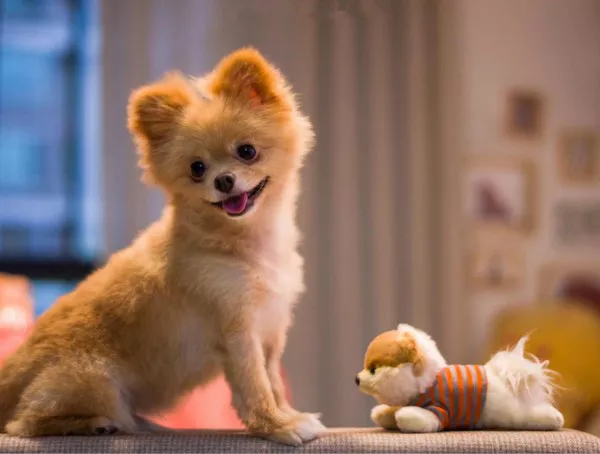Introduction
The charming Pomeranian, with its fluffy coat and spirited personality, is not just a delightful companion but also an eager learner. Teaching your Pomeranian to shake hands is not only a fun trick but also a way to strengthen the bond between you and your furry friend. In this comprehensive guide, we explore the art of canine communication and unveil the secrets to successfully train a Pomeranian to shake hands. From understanding their unique characteristics to implementing effective training techniques, this guide is designed to make the process enjoyable for both you and your pint-sized companion.
Understanding Pomeranian Characteristics
Size Matters: Training a Pomeranian to shake hands requires an understanding of their size. These small dogs have dainty paws, making the handshake a charming and manageable trick. Adjust your training approach to accommodate their petite stature.
Eager-to-Please Attitude: Pomeranians are known for their eager-to-please attitude. They thrive on positive reinforcement and enjoy making their owners happy. Harnessing this willingness is key to successfully train a Pomeranian to shake hands.
High Energy Levels: Pomeranians are bundles of energy. Incorporate short, engaging training sessions to keep them focused and prevent boredom. A well-exercised Pomeranian is more likely to participate enthusiastically in training.
Building the Foundation
Start with Basic Commands: Before you train a Pomeranian to shake hands, ensure they are familiar with basic commands like “sit” and “stay.” These foundational commands establish a language of communication between you and your Pomeranian.
Create a Positive Environment: Training a Pomeranian to shake hands should be a positive and enjoyable experience. Choose a quiet, distraction-free space to conduct training sessions, and use treats and praise to reinforce good behavior.
Establish Trust: Building trust is crucial when you train a Pomeranian to shake hands. Approach them calmly, use gentle touches, and reward them for positive responses. Trust forms the basis for a strong bond and effective training.
Training Techniques: The Step-by-Step Guide to Shake Hands
Introduce the Paw: Begin the process to train a Pomeranian to shake hands by gently lifting one of their front paws. Use a cue word like “paw” or “shake” while doing so. Reward them with a treat and verbal praise when they offer their paw willingly.
Positive Reinforcement: Positive reinforcement is the cornerstone of successful training. Whenever your Pomeranian offers their paw, immediately reward them with a treat and enthusiastic praise. Consistency is key to reinforcing the desired behavior.
Repeat and Reinforce: Repetition is vital when you train a Pomeranian to shake hands. Practice the handshake command regularly, gradually increasing the duration they hold their paw in your hand. Reinforce each successful attempt with treats and positive affirmations.
Overcoming Challenges: Troubleshooting the Training Process
Patience is a Virtue: If your Pomeranian is initially hesitant to offer their paw, practice patience. Avoid forcing their paw into your hand, as this can create resistance. Instead, encourage and reward small, voluntary paw movements.
Distractions and Focus: Pomeranians can be easily distracted. When you train a Pomeranian to shake hands, minimize distractions in the training environment. If they lose focus, gently redirect their attention and resume the training session.
Adapt to Individual Pace: Each Pomeranian is unique, and their pace of learning may vary. Adapt your training approach to their individual personality and progress. Celebrate small victories, and don’t be discouraged by temporary setbacks.
Incorporating Advanced Commands: Elevating the Handshake
Extend Duration of Paw Hold: As your Pomeranian becomes proficient in the handshake, work on extending the duration they hold their paw in your hand. Gradually increase the time before offering a treat, reinforcing their ability to maintain the handshake.
Introduce the Other Paw: Elevate the handshake by introducing the concept of shaking with both paws. Use distinct cues for each paw to avoid confusion. This advanced step adds flair to the trick and showcases your Pomeranian’s intelligence.
Combine Commands: Once your Pomeranian masters the handshake, incorporate it into a sequence of commands. For example, ask them to “sit,” followed by “shake hands,” creating a delightful routine that showcases their training prowess.
General Tips for Successful Training Sessions
Consistency is Key: Consistency is paramount when you train a Pomeranian to shake hands. Stick to a regular training schedule, use the same cues, and maintain a positive atmosphere throughout the sessions.
Keep Sessions Short and Fun: Pomeranians have short attention spans, so keep training sessions brief and engaging. End on a positive note to leave them excited for the next session.
Celebrate Achievements: Celebrate even the smallest achievements during training. Whether it’s a well-executed handshake or a prompt response to a cue, acknowledge and reward their efforts.
Conclusion
Training a Pomeranian to shake hands is a delightful journey that enhances the bond between you and your furry friend. Understanding their unique characteristics, building trust, and employing positive reinforcement are the cornerstones of successful training. With patience, consistency, and a dash of creativity, you can unlock the paw-sibilities and showcase your Pomeranian’s intelligence and charm. As you embark on this training adventure, relish the joy of connecting with your Pomeranian and savor the moments when a tiny paw extends in a delightful handshake, affirming the strength of your shared bond.


